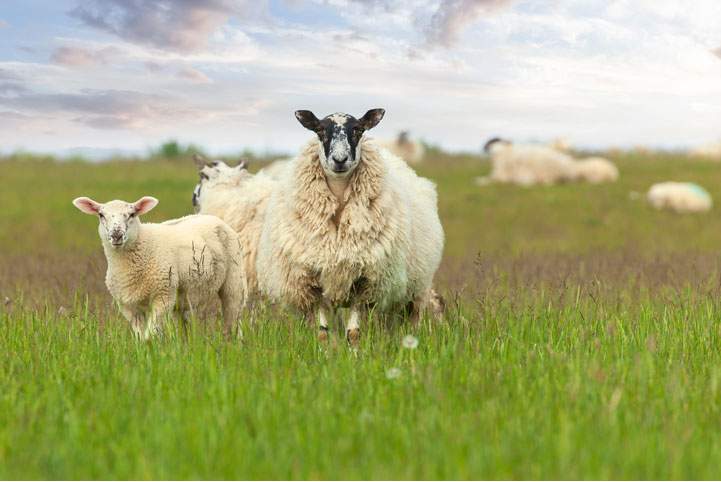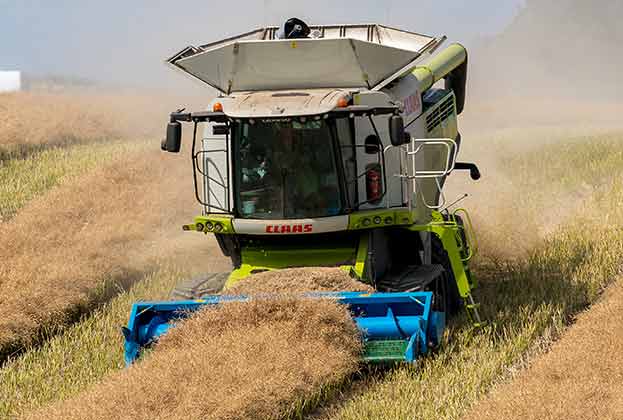A more dynamic market will develop due to the broader relevance of agricultural land, but scarcity will remain a key market influence
In the run-up to COP26 in Glasgow, companies and governments across the world committed to ambitious net zero targets. Land is the only asset class that can be both a source and a solution to climate change. It is this need to provide a solution to the broader economy that will drive a change in use of a quarter of the UK’s land over the next 30 years and directly impact farmland values.
This strong sentiment in the farmland market is buoyed by a lack of supply. Our revised forecasts for supply support the improved outlook for farmland values, as the supply and demand imbalance continues to create a scarcity factor for available land.
SUPPLY EXPECTATIONS
On average, 160,000 acres have been advertised each year since 2000, but this falls to an average of 150,000 per annum over the last ten years. While the last few years have been exceptional for limited supply, due to uncertainty over Brexit and then the Covid-19 pandemic, there has been a downward trend in publicly marketed farmland for some time. We expect the next five years to buck this trend as the agricultural transition progresses and deepening BPS income cuts encourage sales. It is anticipated that the area of publicly marketed farmland will increase to the previous ten-year average of 150,000 acres per year.
The government’s announcement of the Lump Sum Exit Scheme, designed to assist farmers in England with retirement by capitalising their subsidy payments, has been met with little enthusiasm. Criticisms include that the scheme is too complex and its eligibility conditions are too restrictive. As such, we do not believe it alone will trigger a significant increase in farmland brought to the market. Those who take up the scheme are likely to be intending to retire from the farming industry anyway. However, the agricultural transition plan more generally removes support for farm incomes in England, which will see farmers find new ways of making their businesses viable, through existing markets, diversifications or emerging environmental schemes. While Scottish and Welsh policy looks to be more reminiscent of Common Agricultural Policy schemes, changes in every nation are likely to result in consolidation of farm businesses and an increase in the area of agricultural land traded.
Investment in farmland is seen as a hedge against increasing inflation and we may see investors looking to diversify their portfolios with agricultural assets
Andrew Teanby, Associate Director, Rural Research
As the UK is learning to live with the Covid-19 pandemic, the dust is beginning to settle on the economic fallout. The Bank of England base rate was kept low in 2021, until the announcement in December to increase it to 0.25%. With inflation at 5.1% and agricultural inflation at 21.9%, there is increasing pressure on farm finances. However, the other side of the same coin is that investment in farmland is seen as a hedge against increasing inflation, and we may see investors looking to diversify their portfolios with agricultural assets.
The economic recovery looks set to focus on taxing income through the new Health and Social Care Levy for now, and the risk of damaging capital taxation reform has reduced. In November, the Treasury confirmed that it would not be proceeding with any changes to inheritance tax or its important reliefs and will only be making minor changes to the capital gains tax regime. The status quo will continue to support the retention of farmland by keeping farms intact, but also increase demand as rollover buyers seek eligible assets.

Forecast values
Environmental concerns are likely to be a key driver in the highest levels of growth
Food production is a fundamental function of farmland and returns from the sale of agricultural produce contribute strongly to farmland values. In the next decade, global demand for food will increase due to population growth. The World Bank forecasts an increase in food commodity prices, such as wheat (1%), barley (12%) and chicken (3%) over this period, while the price of beef will fall (13%). This is likely to translate to domestic pricing, which supports farm returns and farmland values by extension.
In addition, commodities (including grains, oils and grasses) will likely experience a strengthening market for biofuels to help reach the government’s 2050 net zero target. This market has the potential to compete with food, and the increased demand for crops could push prices up.
However, it is the natural capital markets that are generating the ’buzz’ in the farmland market. Net zero and biodiversity targets from the government as well as industry will result in land being used for renewable energy, tree planting and rewilding, which will continue to result in a supply and demand imbalance that will strengthen farmland values.
The royal assent of the Environment Act in November 2021 has confirmed the requirement for developments to achieve 10% Biodiversity Net Gain (BNG) in England. Developers can obtain additional biodiversity units through habitat enhancement and creation onsite, offsite, or through the purchase of statutory biodiversity credits. As a legislated mechanism, BNG is likely to be among the first substantial drivers of natural capital-based income streams for farmland and the requirement for offsetting to be local means regions across Great Britain will benefit from this emerging market.
While afforestation and peatland restoration are the best-known nature-based carbon storage solutions in the UK, the less mature soil carbon sequestration market is attracting significant interest
Emily Norton, Head of Rural Research
The ability for pasture land to provide valuable carbon and water management services is strengthening demand for it over other land types. For example, woodland planting projects for carbon offsets are targeting grassland due to the constraints of planting on more productive arable land, including the constraint of the price of land. Furthermore, the rules surrounding carbon offsetting and additionality means companies may opt for ownership models over purchasing credits, as land that is already sequestering carbon can represent a negative value on their carbon balance sheet.
While afforestation and peatland restoration are the best-known nature-based carbon storage solutions in the UK, the less mature soil carbon sequestration market is attracting significant interest and is of potential relevance to all farmland. The announcement that the Sustainable Farming Incentive (SFI) scheme will not rule out private financing for soil carbon may be a welcome relief to land managers who can potentially stack ecosystem services and funding on the same land parcels to increase profitability. We would expect policy in Scotland and Wales to follow suit.
At the other end of the scale, demand for lifestyle farms is expected to remain as a result of the pandemic’s long-lasting impact on working practices and recognised importance of one’s health and wellbeing.
Combining these factors, we anticipate real values for poorer quality grassland will climb, on average, 6% per annum in the short term although, as with every asset class, location and specific environmental characteristics are likely to be key drivers in achieving the highest levels of growth. For prime arable land, commodity prices in the short term look set to hold firm and an increasing interest in energy crops and renewables may continue to support profit from production. We expect this to support growth, forecasted at 2.5% annually, excluding inflation.
Read the articles within Spotlight: The Farmland Market below.
.jpg)
